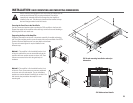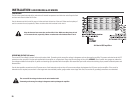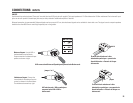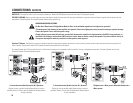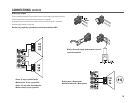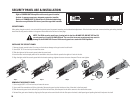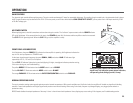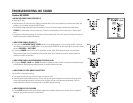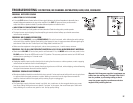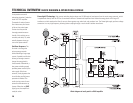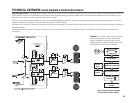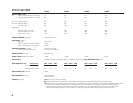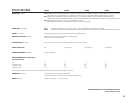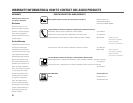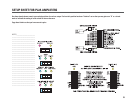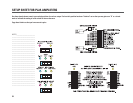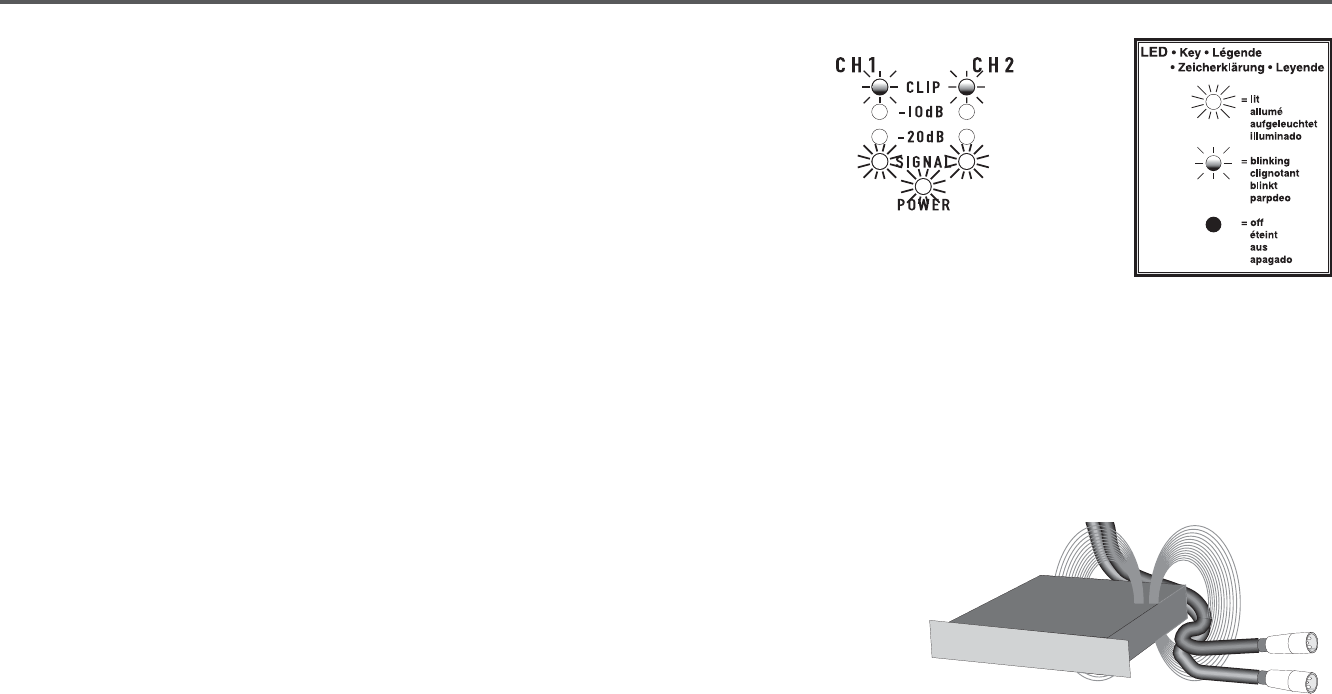
PROBLEM:
DISTORTED SOUND
•
INDICATION:
CLIP LED FLASHING
• If the red
CLIP
indicator flashes before all three signal indicators do, the load impedance is abnormally low or
shorted. Unplug each speaker one-by-one
at the amplifier.
If the
CLIP
LED goes out when you disconnect a
cable, that cable or speaker is shorted. Try another cable and speaker to locate the fault.
•
INDICATION:
CLIP INDICATOR NOT FLASHING
• This could be caused by a faulty speaker or loose connection. Check the wiring and try another speaker.
• The signal source may be clipping. Keep the amplifier gain controls at least halfway up so that the source does
not have to be overdriven.
PROBLEM:
NO CHANNEL SEPARATION
• Check the yellow PARALLEL or orange BRIDGE MONO LEDs on the front panel, which indicate the switch settings
on the back of the amplifier. Neither should be lit in dual-channel, bi-amp, or stereo use where different signals go to
each channel. Make sure the "Parallel Input" and "Bridge Mode" switches are
OFF
.
• Make sure other equipment in the signal path, such as mixers, preamps, etc., is set for stereo, not mono.
PROBLEM:
CH 1 IS ALL LOW FREQUENCY MATERIAL & CH 2 IS ALL HIGH FREQUENCY MATERIAL
• Check that the BI-AMP LED on the front panel is not illuminated. If it is, the MODE switch on the rear panel is in the
BI-AMP position. Move the MODE switch to the 2 CH position. This assumes you do not want to be in BI-AMP mode
and that you are operating in a 2 channel mode.
PROBLEM:
HISS
• Unplug the amplifier input to confirm that the hiss is coming from the source or a device upstream; erratic or popping
noises indicate an electronic fault in the offending unit.
• To keep the normal noise floor low, operate the primary signal source at full level, without clipping, and avoid boosting
the signal further between the source and the amplifier.
PROBLEM:
SQUEALS AND FEEDBACK
• Microphone feedback should be controlled with mixer controls. If noise continues to build up with zero mic gain, there
is a serious fault in the signal processors or cables. Working in succession from the signal source towards the
amplifier, check each device in the signal path by reducing its gain or unplugging it.
PROBLEM:
HUM
• The PowerLight
TM
supply eliminates internal hum fields, but transformers in other magnetic devices may cause
hum. Move cabling and signal sources to identify "hot spots" in the system; then avoid those spots. Cables with
faulty shielding are a common entry point for hum. Use top quality cabling.
Magnetic field from power supplies in equipment can
induce hum into cabling that is located in the field. If
hum is a problem, try relocating cabling so that is
away from power supplies, transformers and other
magnetic field producing devices.
TROUBLESHOOTING: DISTORTION, NO CHANNEL SEPARATION, HUM, HISS, FEEDBACK
27



